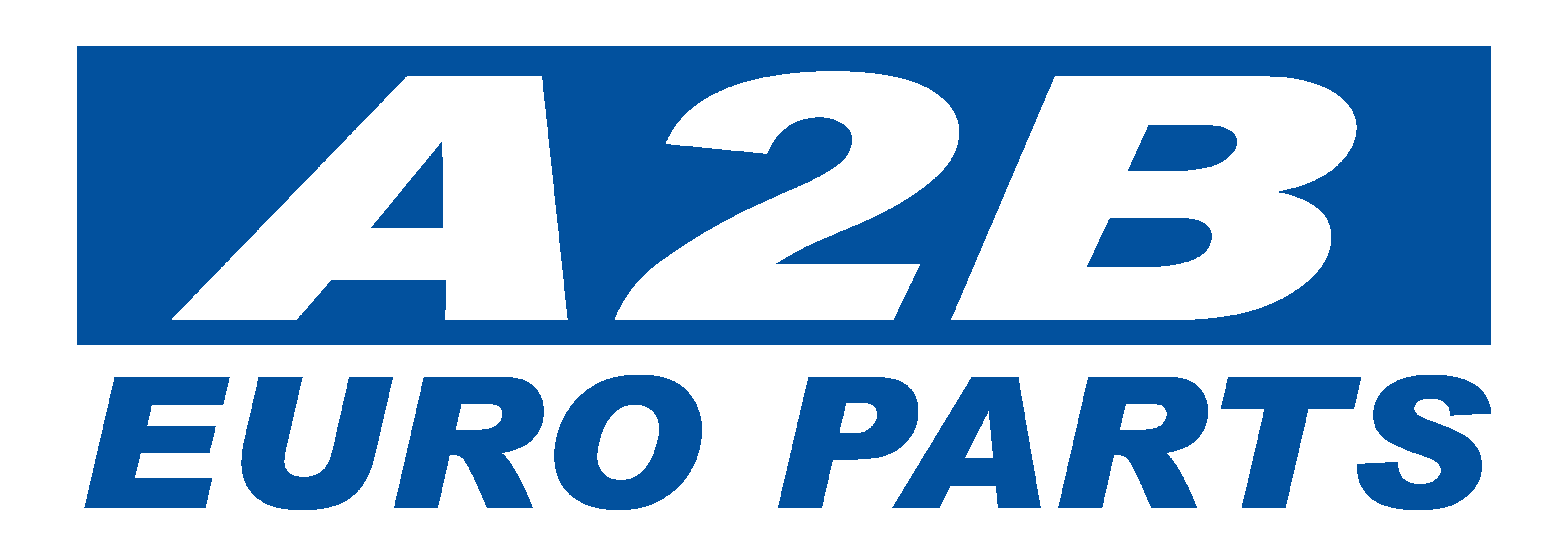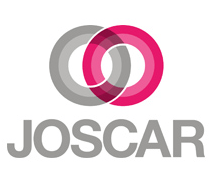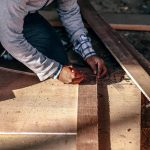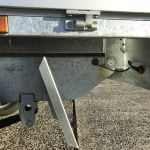Trailer Maintenance Tips
Get the most out of your trailer, ensure it’s functionality and increase its lifetime with these trailer maintenance tips. Irrespective of your particular trailer type and usage, we generally recommend that routine maintenance is carried out monthly or at least quarterly on standard trailers, and every use for boat trailers, carry out a mini service check.
Frequently Wash It
Keep your trailer clean from acid, alkali and dirt, especially if you have an enclosed cargo trailer or cabin trailer which has much more surface area than standard trailers. You should wash these trailers with warm soapy water, then rinse off with fresh water. Be sure to spend time cleaning the reflective plates and lights, as well as all the nooks and crannies where grime can build up. Don’t forget to rinse off the undercarriage of the trailer chassis, as road dust can accumulate and degrade non+moving parts. Some portable office or cargo trailers can be quite tall. There are plenty of tools to help you get every square inch of that trailer clean, like pressure hoses or extension poles. Telescopic wash brushes and chamois cloths can make your life a lot easier. Or you can opt for a sturdy, non-slip step ladder with good grip tread on each step, to reach the upper parts of your trailer.
If you have a boat trailer, you must wash it after every use, especially if you use it around salt water. Saltwater can accelerate corrosion, so be sure to pay extra attention to the wheels, drums, suspension and brake lines. Saltwater can collect on these parts and evaporate, leaving a salt residue that can wreak havoc on metal.
Treat Rust
A good quality trailer is always key, whether you have a good trailer or just a basic painted trailer, being along the East Coast, there is a risk of rust! It is always a good idea to keep your eye out if you have any rusted parts and areas as you wash. Etch away any patches you find with sandpaper or steel wire brush. After the trailer has dried, touch up the areas with rust converter, then a zinc based coating. Once the paint dries, apply a healthy coat of wash/wax on your complete trailer. You should do this even if your trailer did not require any touching-up. If you have to wash/wax the car, do the trailer as well. Keeping your trailer waxed sounds a bit over the top, but it protects your investment for many years to come from the elements and prevents rusting.
Brakes
Keeping your trailer brakes in top working order, greased lines and correctly set should always be a priority. In a nutshell, you have three types of trailers as far as trailer brakes go.
- Un-braked, which is pretty self-explanatory.
- Over-ride or overrun brakes, which is the system where the trailer weight applies pressure to a pressurised gas strut (attached to the coupling), this single unit in turn applies even pulling power to each brake cable, attached to the drum brake. Totally self managed whether you have an empty or fully loaded trailer.
- Electric over hydraulic setup, where an electronic control module applies power to a hydraulic brake actuator. Electric over hydraulic systems also have an in-car controller. This allows the trailer brakes to be operated independently of the car brakes.
Drawtube.
With over-ride brakes, everything is pretty simple. Whether they are cable or hydraulic, there are a few things you need to do to ensure they stay in good working order. The first and easiest part is keeping the sliding hitch and drawtube lubricated. This is done by simply pumping grease into the grease nipple on the side or top of the hitch receiver. Doing this once or twice a year is probably adequate. Check the coupling and drawtube regularly and if it is looking a bit dry, be sure to add some more grease.
Brake Callipers & Brake Pads
Located at the wheel end of an overrun braked trailer is either a hydraulic brake calliper or a lever and cable system attached to the brake drum. Inside the brake drum, whether hydraulic or cable, there should be brake pads. Trailer brake pads are pressed against the inside of the drum, slow or stop the trailer.
Another issue that can arise in infrequently used trailers is the brake pads seizing, on the inner side of the drum. This is probably a bit more common in the hydraulic type but will also happen to cable types as well. If you are checking your brakes regularly and find the problem early enough, simply attach the tow vehicle to the trailer, then try reverse a foot or two, then drive forward a foot or two. This should release the brake mechanism.
Adjust Cable
If you have a cable activated override brake system, keep in mind that the cable will need to be adjusted occasionally. This can be due to a bit of stretch in the cable and also due to the brake pads wearing down. On some occasions you may also find it necessary to slacken the cable slightly after replacing the brake pads.
Break Fluid
With hydraulic systems, bear in mind that brake fluid does not last forever. Brake fluid by nature absorbs moisture which reduces its ability to do its job, so it is important to bleed and replace hydraulic brake fluid yearly.
Test Breakaway System
It is also a good idea to test the breakaway system on a semi regular basis. Electric over hydraulic brakes should always be operable whenever you are driving. Towing a load that is heavier than your car without brakes or with inefficient brakes is very dangerous. If you are unsure of how to service your own brakes, it’s better and safer to give the job to a professional.
Keep Trailer Parts Greased
Dirt is your trailer’s biggest enemy. Once particles of dirt and dust get into your trailer’s moving parts, it can cause friction and break down. Keeping your trailer’s parts greased keep trailer joints and axles moving smoothly. Pretty much any part of your trailer that’s designed to move in some form or fashion or comes in contact with other parts should be kept lubricated to prevent corrosion and friction.
In addition to the breaking parts mentioned above, features like a winch, ball hitch, springs and tongue jack all require lubrication and you should keep them greased throughout the year. It’s a good idea to make lubricating your trailer’s moving parts an important part of your routine before each long trip. Depending on your trailer type or build, a very important part to lubricate are the wheel bearings. However, with some European wheel drums, the bearings are sealed and do not require greasing.
Trailer Wheel and Tire Maintenance:
The wheels on your trailer are connected to the axle by means of the wheel hub/drum. Since the wheels are extremely important to your trailer’s ability to function properly. It’s important to remove the wheel and inspect the drum every once in a while and rotate your wheels front to back or side to side.
if you do need to strip the drum. –
First, you will need to jack up the trailer and remove the wheel. Remember that when the trailer’s wheels are off the ground it’s potentially unstable, so make sure you always work well back from it and no part of your body is underneath it at any time.
Maintaining the Bearings
Australian design trailers- Bearings are made up of two parts – the ‘cup’, which is pressed into the hub and the ‘cone’, which contains the rollers. Since the wheel bearings and axles are a metal-on-metal combination, it’s important to keep them well greased to prevent friction, protect them from heat caused by friction. protect them from heat caused by friction and avert potential wheel damage. The wheel bearings are packed with inner bearings that allow the wheel bearings to move as a whole. Part of any trailer maintenance should include cleaning and greasing the wheel bearings for each wheel.
You will find your wheel bearing on the wheel hub, and it should be easily removed after removing the hardware holding it in place. Wipe down the bearings and check they don’t have any nicks, dents or discoloration. If they need to be replaced, they should always be replaced in a set with cup and cone together and be matched to the load rating of the trailer. If they are ok, you will want to soak the wheel bearing in gasoline to loosen grime and old grease. Remove the old seal, then the inner bearing. Thoroughly clean the inner bearing and the wheel bearing as a whole. After the parts are completely dry, replace the inner bearing and seal the wheel bearing. Gently add grease to prevent breaking the seal, and wipe off any excess grease. Now’s also a good time to grease the axle. After you reinstall the wheel bearings and the wheel, move on to the next one.
The Seal
Check that the rubber on the seal is still flexible and in good shape, because if it’s not it will not work well. If it needs replacing, make sure you take note of the number stamped on it, so you will know what to get.
After the parts are completely dry, replace the inner bearing and seal the wheel bearing. Gently add grease to prevent breaking the seal, and wipe off any excess grease. Now’s also a good time to grease the axle. After you reinstall the wheel bearings and the wheel, move on to the next one.
The Race
Run your fingers round the race to check for scratches and note any discoloration. Like the other parts, write down its number so it can be replaced.
Maintaining The Tires
In many cases, especially with large 3500kg trailers, the added weight that the tires support even when stationary can cause trailer tires to wear out significantly faster than the tires on your towing vehicle. If your trailer’s been sitting around unused for a while, it’s a good bet the tires could be deflating. All tires leak air over time, and so keeping an eye on your air pressure is essential to keeping your trailer properly maintained. Taking a trailer fully loaded out on the open road with under-inflated tires can be extremely dangerous. The friction created when the rubber meets the road can also ruin your tires. This situation can lead to a blowout, which is the last thing you want to happen to a trailer hitched to your car and travelling at high speeds. Before inflating your tires, check the manufacturer’s suggested pounds per square inch (psi) of inflation.
Before every trip, check your trailer tires for wear. It’s recommended that you replace your trailer tyres every three to five years. When replacing tyres, make sure the ones you purchase match the ones you already have, if you are not buying a complete set. It’s a good idea to shell out the extra cash to replace all of your trailer tires at once, as even good tires are worn to some extent and the addition of a new, unworn tyre can lead to handling difficulty when towing. Some manufacturers make tires that are specially designed for trailers.
When you store your trailer, cover the tires to protect them against sun damage, which can cause cracking and splitting.
Trailer Light Systems:
Have you ever driven down a dark highway and passed another vehicle that did not have its lights on? Chances are, you thought the other driver was a jerk, and you were right. It’s a bad idea across the board to drive with your lights off or out of order. Keeping your trailer properly maintained entails keeping your trailer’s lights in proper working order. This is especially important, as most states require trailers have functioning brake and tail lights, as well as turn signals and license plate lights. The wiring for all of these lights should be placed together as part of your trailer’s lighting system. In most cases, all wires converge at a central plug that connects to a wiring socket powered by your tow vehicle. When maintaining you trailer, take some time to follow the wires on both your trailer and your vehicle to ensure the wiring insulation is in good shape. Keep an eye out for corroded, worn or cracked spots. If you come across any weak points in the wiring, wrap it several times with electrical tape to insulate it. While your vehicle’s engine is turned off (and your lights set in the “off” position for good measure), you must clean off your electrical connectors. Get rid of any road grime or other type of build-up. Once clean, dab on a little bit of dielectric waterproof grease – this type will not conduct electricity and keeps moisture out of your electrical connections. You can also dab this type of grease around light bulb sockets and other places where moisture can get into your electrical system.
You must test your lights in practice before heading on the road. This can be a bit tricky with just one person, so grab a buddy, neighbour or family member. Test each of the lights in the system, one at a time and visually confirm they are functioning properly. Start with the tail lights and license plate lights. Next, test the turn signals, and finally the brake lights. Replace any bulbs that may have burned out and address any larger electrical problems before taking your trailer out on the road.
Storage
When storing your trailer outside always have the front of it raised so as to allow any water to run out. Jockey wheels are good for this also. This ensures that water does not get trapped in any tight small spots where it can pool and potentially erode the trailer. If possible, cover the trailer in a tarp, particularly the wheels and plastic light covers, to avoid sun damage.
















